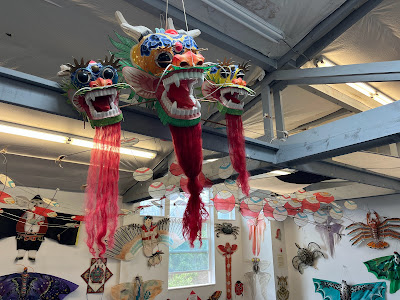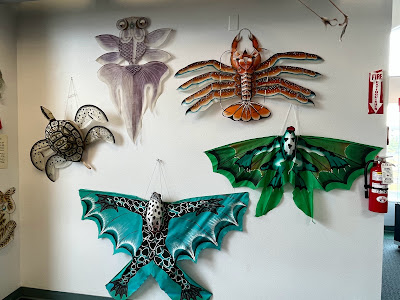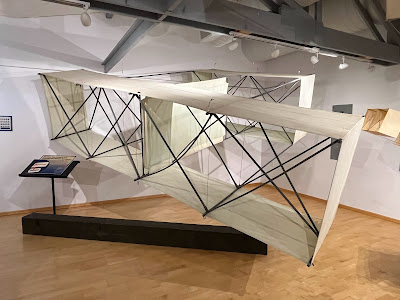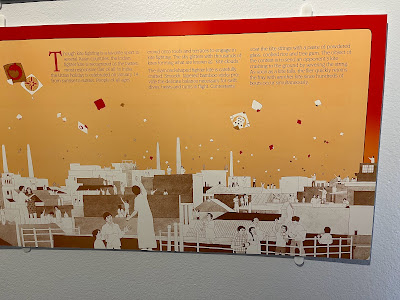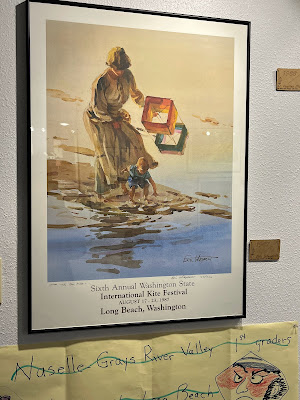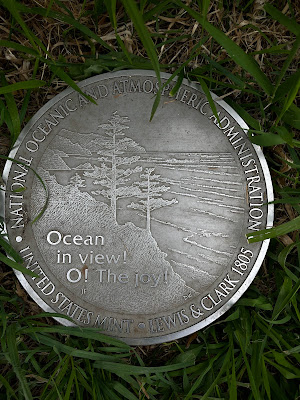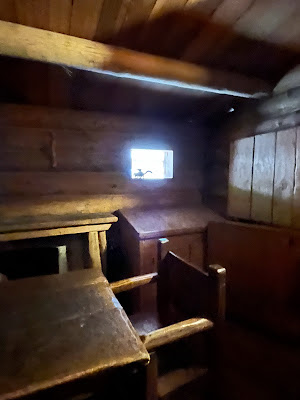While in the Astoria area we stopped by the World Kite Museum in Long Beach, WA. This is one-of-a-kind museum and the home of the annual International Kite Festival that will be in its 43rd year in August of 2023.

The museum traces the history of kite flying and has many interesting kites on display, as well as kites for sale.
A display at the museum reads:
"Developed more than 2000 years ago the kite was mankind's first invention that could actually fly. For centuries people all over the world used kites to pursue the dream of flying themselves.
During Medieval times, the first human pilots rose into the air using giant kites for wings. Beautiful kites used in rituals and ceremonies kept the idea of flying alive in people's minds. Eventually, pioneering scientists discovered the secrets of aerodynamics, often by performing experiments using kites.
Since earliest days, kites have provided both the technology and the inspiration that has made flying possible."
According to the Museum, the Japanese had the first word for kite, which meant "Paper Hawk".

This Chinese dragon kite is 50' in length. The orange and white "body" sections are suspended from the ceiling and wind throughout the museum.
In China birds were considered to be a symbol of happiness...
This quite was huge...and beautiful
Insect kites signify good fortune
The Yunnan province in China makes kites in this unusual shape.
They have a sturdy frame and fly well in strong winds.
Alexander Graham Bell discovered that he could use tetrahedral shapes in different combinations to make a variety of kites. These kites had maximum lift and minimum weight.
This kite is almost like a quilt!
A leaf quilt sewn with grasses or vines
This is a WWII kite that was used for different purposes during the war.
The kite could collect and send weather data on aircraft carriers to help determine when it was safe to fly or land. This kite also could lift equipment so enemy planes could be detected by radar when they were further away.
Kites were used for target practice. They were far less expensive than shooting at planes!
Many experimented with using kites to fly,
some successfully, others not!
One of the museum visitors commented that this kite should have been modeled after Pegasus, and have wings. It's hard to believe this particular kite could actually fly.
The museum had a display telling more about kites.
One display explained the basic types of kites.
One was about kite fighting. When I read "Kite Runner" by Khaled Hosseini I was intrigued by the kite fighting described in the novel. The museum had several fighting kites, including some for sale.
In 1846 Engineers held a contest to see if anyone could fly a kite across Niagara Falls. A boy managed to get his kite snagged on a tree on the Canadian side of the falls. That string was then used to help pull heavier strings and cables across the water, enabling Engineers to finally get a cable across the water in order to begin constructing a bridge.
There was a display of the posters created for advertising the annual kite festival. I really enjoyed seeing many of the posters. The artists captured the fun of flying kites. Here are a few of my favorites:


